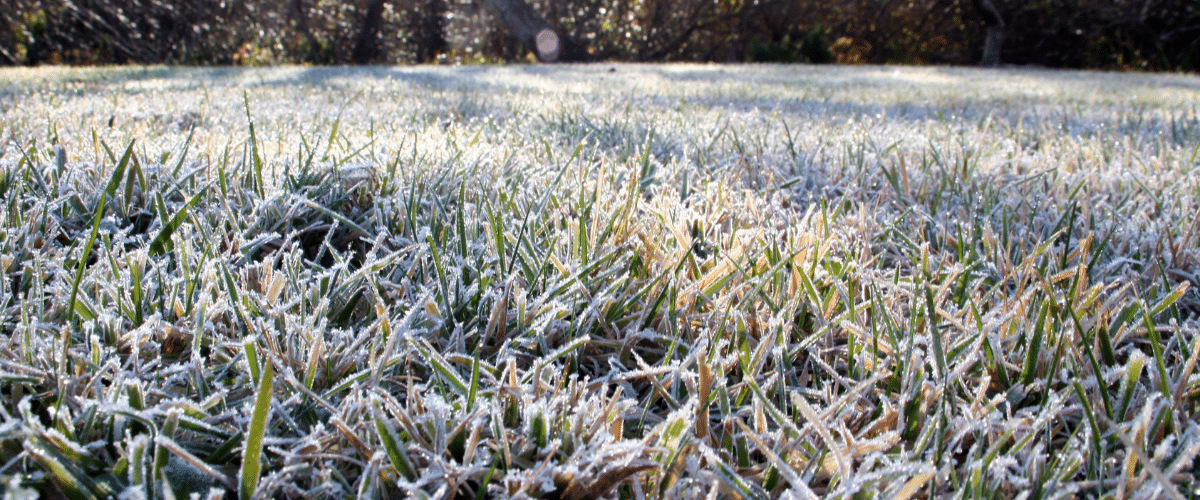How to Best Protect Your Lawn from Early Morning Frost

Morning frost on your lawn can be more than just a “pretty” layer of sparkle. For homeowners, it can mean stressed grass blades, patchy turf, and even long-term damage if left unmanaged. In upstate New York and other regions with cool fall mornings, understanding how frost forms and how to protect your lawn against it is an important part of seasonal lawn care.
The good news is that protecting your grass from frost does not have to be complicated. With the right routine – particularly daily watering in the morning – you can shield your lawn from the worst effects and keep it healthy throughout the colder months.
Why Frost Forms on Grass in the Morning
Frost develops when air temperatures drop to near or below freezing, and moisture in the air settles onto surfaces like grass blades. Because grass cools faster than the surrounding air, water vapor condenses and freezes, creating that familiar icy layer.
Morning frost is especially common on calm, clear nights where the heat radiates quickly from the ground. Lawns in shaded or low-lying areas often see heavier frost because the air is cooler there compared to open, sunlit spaces.
At What Temperature Does Grass Frost Form?
Grass frost doesn’t always wait for temperatures to hit 32 degrees. Frost can begin to form when air temperatures are around 36-38 because ground and surface temperatures are often several degrees colder than the air above. This means that your lawn can experience frost damage even if your car thermometer shows temperatures just above freezing.
How Frost Damages Grass
The damage from frost occurs when grass blades become frozen and brittle. Walking or mowing on frosted grass can cause the ice crystals to puncture the cell walls inside the blade. Once the ice melts, the damaged cells collapse, leaving behind brown patches and weakened areas that take time to recover.
While frost alone is not always fatal to grass, repeated exposure without proper protection can weaken your lawn and make it more vulnerable to disease and thinning.
Should You Water Grass Before a Frost?
Yes, watering your grass before frost can help prevent damage. The key is to water in the early morning rather than late evening. Here’s why:
- Moist soil retains heat better than dry soil. When you water in the morning, the soil absorbs and holds warmth from the sun throughout the day. That stored heat radiates back at night, keeping the grass blades just a bit warmer and reducing frost formation.
- Morning watering prevents ice buildup. If you water late in the day, the moisture may freeze overnight and create heavier frost, which can harm your lawn instead of protecting it.
- It supports overall lawn health. Consistent hydration strengthens grass roots, making them more resilient to cold weather stress.
Watering should be light, just enough to moisten the soil, not to saturate it. This simple step can make a big difference in how your lawn weathers chilly mornings.
Other Tips for Preventing Frost Damage
While daily morning watering is the most important step, there are other practices that can help protect your grass:
- Avoid walking on frosty grass. Foot traffic crushes frozen blades, causing long-term injury.
- Hold off on mowing when frost is present. Mowing frosted grass blades can shred them, leaving your lawn patchy.
- Keep grass at the right height. A lawn that’s too short is more vulnerable to cold damage, while overly tall grass holds more moisture and frost. Aim for a balanced height as recommended for your grass type.
- Aerate and fertilize in the fall. Healthy, well-nourished turf is more resilient against environmental stresses, including frost.
Each of these practices supports a stronger lawn that can recover quickly when frost does appear.
Long-Term Lawn Care Strategies
Frost is a seasonal challenge, but your lawn care routine year-round plays a role in how well your grass stands up to cold mornings. Regular aeration, overseeding, and fertilization in the fall prepare your turf for winter and ensure it emerges healthier in spring.
A professional lawn care provider can also identify problem areas in your yard – like compacted soil, poor drainage, or excessive shade – that may make frost damage worse. By addressing these issues early, you can improve your lawn’s ability to withstand seasonal stresses.
Protect Your Lawn with Groundhogs Lawn Care
Daily morning watering and smart lawn care practices are the best defense against frost damage, but you don’t have to handle it all on your own.
At Groundhogs Lawn Care, we provide seasonal lawn maintenance services that help homeowners protect their turf and keep it healthy year-round. From fertilization to fall prep, our team knows what it takes to help your lawn thrive in the Queensbury, NY climate.
Call Groundhogs Lawn Care at (518) 407-3806 today to schedule lawn care services and give your grass the protection it needs this season.